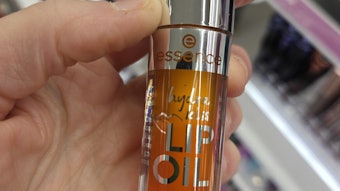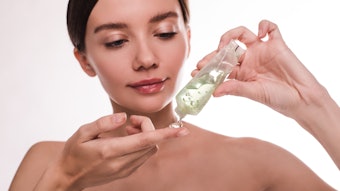
Read the full article in the June 2021 digital edition. . .
Products intended to modify hair’s natural color play a key role in the universe of hair cosmetics. However, the colors obtained by permanent, semi-permanent or temporary dyes show some disadvantages. First, product efficacy strongly depends on the hair structure; i.e., whether it is damaged or not. Second, the fading of color during or after hair cleansing can be disappointing. For these reasons, large variations are frequently observed either in the final hair color result, from one application to the next or, worst-case scenario, at different sites on the crown of the head. 1
Isopentyldiol (IPD) was previously tested for its reparative effects on damaged hair.2, 3 Improvements in brightness after repeated wash-and-rinse cycles4 and conditioning effects also were observed.5 This is due to the material’s unique structure. It is a branched chain bi-alcohol with five carbon atoms (3-methyl-1,3-butanediol), which makes it capable of interacting with both hydrophilic and lipophilic substances. This bestows it with solvent, coupling and humectant properties.
Upon contact with keratin, the material forms hydrogen bonds that can be leveraged to improve the color performance of permanent and semi-permanent dyes, particularly in damaged and/or treated hair. This immediate, deep saturation of color hue and enhanced brightness is the focus of the present work.
It is well-known that various hair dye effects, i.e., temporary, semi-permanent or permanent, are achieved based on the size of the dye molecules, which determines whether and how deeply they penetrate the cortex or precipitate onto the cuticle. In addition, one must consider that hair’s receptivity to coloring is influenced by several physical and structural parameters such as porosity, elasticity, wettability and overall fiber texture.
Different types of hair—thick or coarse, fine or thin—exhibit varying affinity for different commercial products and show wayward results after coloring/waving applications. Severely damaged hair also behaves differently in comparison with healthy hair, which has less porous shafts and hydrophobic surfaces.6 Considering these variables in hair dyeing and the previous efficacy IPD has shown, as noted, the present study assessed the capability of IPD to improve the immediate performance of different hair dyes in several hair types. Evaluations include: the effects of the material on the color performance of permanent or semi-permanent hair dyes applied to different hair types; and the influence of IPD on the formulation efficacy of the oxidizing activator. These evaluations were performed by direct comparison of hair strands treated with a formula reference against hair strands treated with formulations containing IPD.
Materials and Methods
Hair strands: The hair strandsa used for the following tests derived from braids of different kinds of hair to represent different aspects of the coloring process. All the strands weighed between 1.5-2.0 g and each was bound using elastic cotton.
- Bleached blonde hair (level 9): Greater intensification of reflection; color change and precipitation are better visible;
- Yak hair: Higher purity of color reflection than the strands of human hair;
- Salt-and-pepper hair: For simultaneous evaluations of bleaching and covering effects (i.e., coloring homogeneity); and
- Brown hair: For the evaluation of the bleaching effect of the formulas.
Color measurements: Color measurements were taken using a colorimeterb incorporating a microcomputer, liquid crystals display and a xenon light source in the measuring head. Three readings were performed at three different points of each strand.
Each measurement derived from the average of three values, automatically generated by the instrument, corresponding to the Cartesian coordinates: L*, a* and b*. As is generally known, L* refers to the gray axis, whose values range from 0-100; here, 0 corresponds to black and 100, to white. This parameter is bound to the luminosity/brightness and light reflection capability of the hair. Parameters a* and b* refer to the two colors axes, where a* represents red-green and b* represents yellow-blue. Both parameters range from -60 (i.e., 100% green for a* and blue for b*) to +60 (i.e., 100% red for a* and yellow for b*). These define the hue of the hair color.
. . .Read more in the June 2021 digital edition. . .
References
- Zviak, C. and Milléquant, J. (2005). Chapter 9: Oxidation coloring. The science of hair care. Available at: https://www.canadiancosmeticcluster.com/uploads/3/7/9/8/37984461/epdf.pub_the-science-of-hair-care.pdf
- IRFAQ France. (2009). Mise en évidence de l‘effet réparateur capillaire de compositions sur base d‘isoprene glycol par mesures instrumentales. 09/E2564 Poitiers.
- IRFAQ France. (2009) Mise en évidence de l‘effet réparateur capillaire du composant isoprene glycol. 09/E2587, Poitiers
- Rigano, L. and Miriam, D. (2018, May 25). Hair trio triumph: Isopentyldiol for color care, strength and anti-frizz. Cosm & Toil 133(6) 58-68.
- Rigano, L. (2015) New amphiphilic coupling agents in cosmetic formulae: Isopentyldiol (IPD) and 3-methoxy-3-methyl-1-butanol (MMB). SOFW 141 (4) 2-8.
- O’Donoghue, M.N. (1987, Jul). Hair cosmetics. Dermatol Clin 5(3) 619-26.
a IMHAIR
b Chroma Meter CR-400, Konica Minolta











